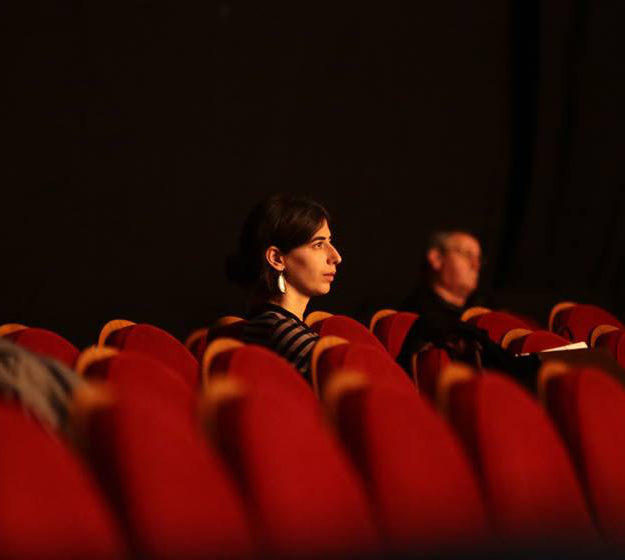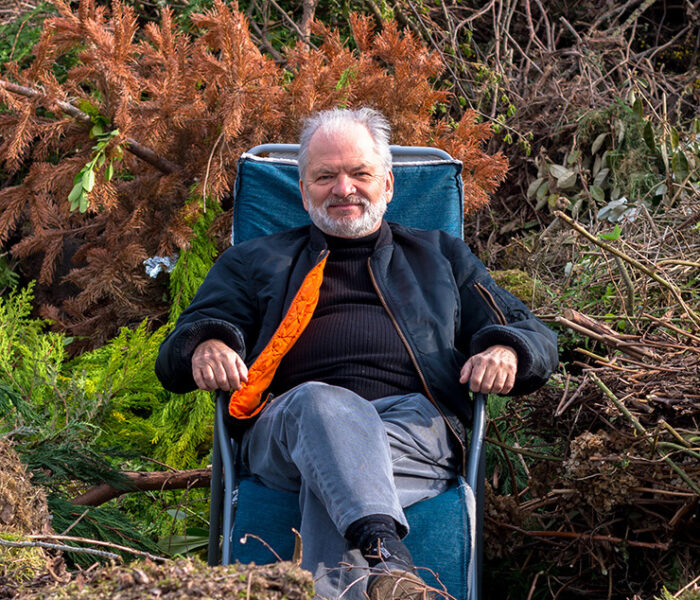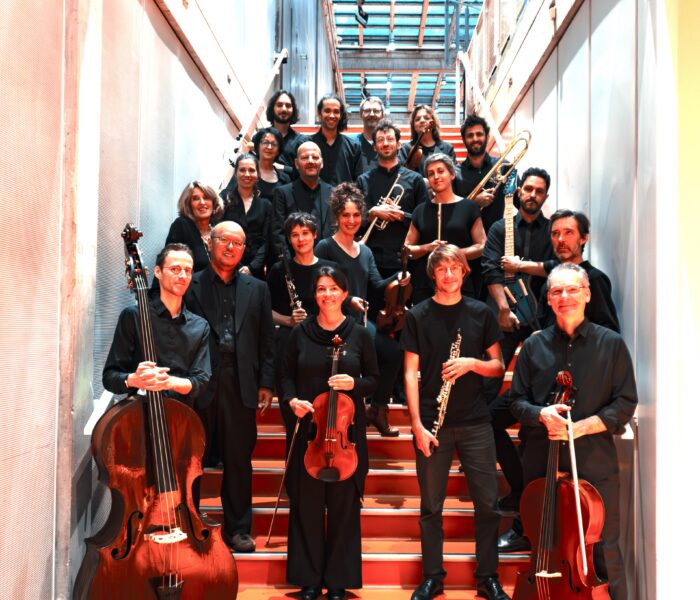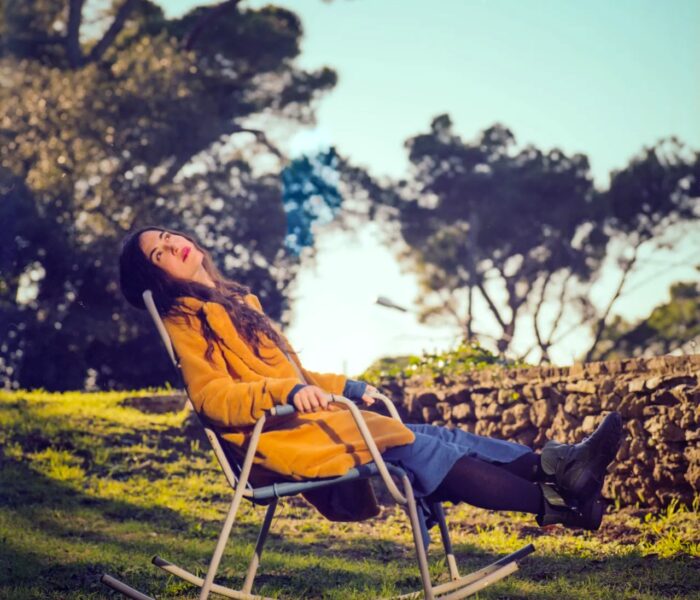Nuria Gimenez Comas is a prolific composer who lives in France and works on both sides of the Franco-Spanish border. Born in Girona, Catalonia, Nuria Gimenez Comas trained in piano and written and electroacoustic composition in France, at the Bordeaux Conservatoire, and in Geneva, at the Haute Ecole de Musique. She also studied mathematics and new technologies at Ircam in Paris and the ZKM in Karlsruhe, Germany.
From Lyon, where she lives, she tells us about her taste for electronics, poetry and literature, writing for theater and sound space...
You are totally committed to the world of software and mixed works, which combine instrumental writing and electronic devices. You also speak of a very strong relationship with drawing in your scores.
I'm very interested in everything visual. I did a bit of painting when I was young, and I've kept this relationship between the world of sound and the graphic aspect of things. I try to project onto paper the gesture of sound and its deployment in space, to define its form and dramaturgy. I've also worked with video, in a project with Arte. The piece Abraxas M was written as part of Ircam's Académie de Manifeste in 2013.
In 2017, you met Kaija Saariaho at Torronto, where you took part in a workshop devoted to mixed pieces. What is your relationship with the spectral movement?
My music is in tune with the spectral spirit. I love working with sound and elaborating complex textures. This led me to discover the saturation movement. I was very impressed by the music of Franck Bedrossian, whose music I listened to a lot when I was a student at the Haute Ecole de Genève. I then met him at Ircam during the Cursus, where he gave masterclasses.
You've already produced some fifteen mixed works, which is impressive considering that writing with electronics requires a much longer conception time.
It's a field in which I feel comfortable. I've mastered the tools and am trained in programming. I've become autonomous, which means I can work much faster. However, over the last two years, I've become more and more diversified. I have projects for acousmatic pieces - a project linked to theater in particular - and sound installations that require only electronics. I'm also writing more pure instrumental pieces.
You've also done several projects with text.
I feel very close to literature and poetry, with which I'm working more and more. In 2017, Notre besoin de consolation, based on the text by Stig Dagerman, was commissioned by the Geneva Camerata and featured Lambert Wilson as reciter. In 2018, I compose Back into Nothingness, a forty-minute monodrama for actress-singer, mixed choir and electronics. I call on the collaboration of Laure Gauthier, who writes the text for the project. The subject is the disturbing case of the orphan Kasper Hauser, which made headlines in 19th-century Europe and inspired writers from Verlaine to Handke. I produced the electronic part at Grame, and the work was premiered as part of the Biennale Musique en scène in Lyon.
How do you see the relationship between text and music?
When I work in collaboration with an author, I try to make the text comprehensible, at least in its broad outlines; but I can sometimes distance myself more from the meaning. As in Notre besoin de consolation, I use spoken rhythms to convey the story, and leave a central part sung in German by the soloist. I confess I have a lot of trouble getting the French language to sing! For the a cappella chorus, I use a much wider palette of sounds.
Laure Gauthier speaks of a dimension of orality in her work?
Indeed, she defends the idea of poetry made to be heard. This year, she organized a course for Ircam Cursus students in which she brought in poets, inviting them to work on their texts through their voices.
I believe another project is underway with her...
With Laure Gauthier and the Meitar Ensemble from Tel Aviv, directed by Pierre-André Valade. It's a commission from the CIRM in Nice for 2021, which of course includes an electronic part. Laure Gauthier suggested the theme of the border between the two Catalan regions at Port Bou, where the graves of Walter Benjamin and the poet Antonio Machado can be found... a particularly rich soil of thought and history. The idea is to record Laure Gauthier's voice in situ! She suggested, for a change, that I call on a baritone voice for which I've never written before.
What is the nature and role of the electronics you haven't yet mentioned?
From the outset, even in pure and mixed electroacoustic music, I wanted to explore gestures and blends of new timbres with the organic quality I'm looking for. Working with Luis Naon also pushed me towards electronic gesture and its extension into space. Then, at Ircam, I started working on synthesis (using physical models and resynthesis in space), also looking for a kind of "natural" or organic material. Working with the stage led me to consider the dimension of space in its formal aspect and in the time-space dialectic. After a research residency on "sound sculptures in 3D space", I also tackled the installation format and the active listening of the visitor, according to his or her trajectory and possibilities for exploring the sound space.
Can you talk more specifically about the nature of the electronic tools and the transformation process in Back into Nothingness?
In the Back into Nothingness project, I used electronics to establish a connection between the sound world and the poetic world, exploring sonorities and images in relation to the text; I also tried to broaden the vocal palette, between the whispered, the stammered, the spoken and the sung, moving towards distortion and shouting. There's also an accumulation effect of spoken voices to simulate, with real-time processing, the crowd but also the moments of "miscellaneous facts" that are also important in the text. Towards the end, there's a sort of accumulation of granular, fragmented material of great density, which brings us back to our own times, with the current proliferation of news and information completely disconnected and sterile.
Have you ever thought about opera?
I've been wondering about it lately, because I had a good subject with a short story by Roberto Bolaňo, a famous Chilean poet who died in Barcelona; but I'm coming up against a problem of rights. Reflecting today, I'm wondering whether it wouldn't be wiser to start from the theater, from the spoken text, to escape the traditional formats of the genre; the German scene seems more open to original proposals to renew the genre. There are a lot of actors who have dual training, as actors and singers. For me, all this is still open to question.
How did you cope with this second confinement? Did it affect your work?
The second lockdown was less restrictive, because on the one hand, the nurseries were open and, on the other, we composers are used to working at home. So I was able to organize myself to find the right balance between composing hours and the necessary outings (walks, sports, etc.). In a way, having everything shut down gave us a bit more time and peace, and, in short, time to think.
Have the planned concerts and shows gone ahead? Under what conditions and in what frame of mind?
During the first lockdown, I had a premiere postponed. During the second, my new orchestral piece was performed in Barcelona, which was almost a miracle. The audience was delighted to be there, with the musicians, soloists and English conductor Duncan Ward all very enthusiastic. Everyone was very enthusiastic, because it was one of the rare orchestral concerts to take place at that time. We organized exchanges with listeners, and there was a real sense of need for live music and discussion, even if all the barrier gestures were respected!
What projects are you working on today?
I'm working on Nostalgie 2175 by Anja Hilling, a Musique Fiction project commissioned by Ircam, with director Anne Montfort. I'm also working on Next Coming, a duet for Duo canadien Airs (percussion and saxophones), commissioned by Le Vivier, which is due to premiere in May.
Do they define new issues in your composition?
The challenge of Nostalgia 2175 is to maintain a constant link between the music and the theatrical text, within a genre that oscillates between sound design and sound representation of certain sensations, emotions and atmospheres evoked by the text. Through music, the aim is to help the audience understand the argument without being didactic, for example, by taking up certain elements that are already part of the text, adding to it and at times contradicting it, so as to be able to go further, with the dimension of sound space. So it's a dramaturgy of sound that adds to the dramaturgy of space with dialogue and narration. The collaboration with director Anne Montfort is constant and close, and allows us to dig deeper into the dimension of the text: rereading it, listening to it, cutting it and experimenting with it through staging; this allows us to find new hidden meanings, new possibilities in this text that is so rich and profound.
After this work, we'll continue with a stage version of the play, with the full text, which will present us with new challenges for a work we already know inside out...
Next Coming is inspired by the reading done during these two confinements and the long absence of culture shared with others. It consists of readings from the works of philosopher Paul B. Preciado, based on the idea of a future revolution, a new reality that is within our reach. The use of transducers will enable me to work on the acoustic sound of the instruments and to go further in the timbral crossings without the use of added electronics, preserving the acoustic source of the instruments that are part of the piece and in particular the metal instruments (tams, gongs). I'll also be working on small spaces of "freedom" in which the performer can choose his or her material, as well as a space for guided, fairly dense improvisation.
Interview by Michèle Tosi



)



